Blogs
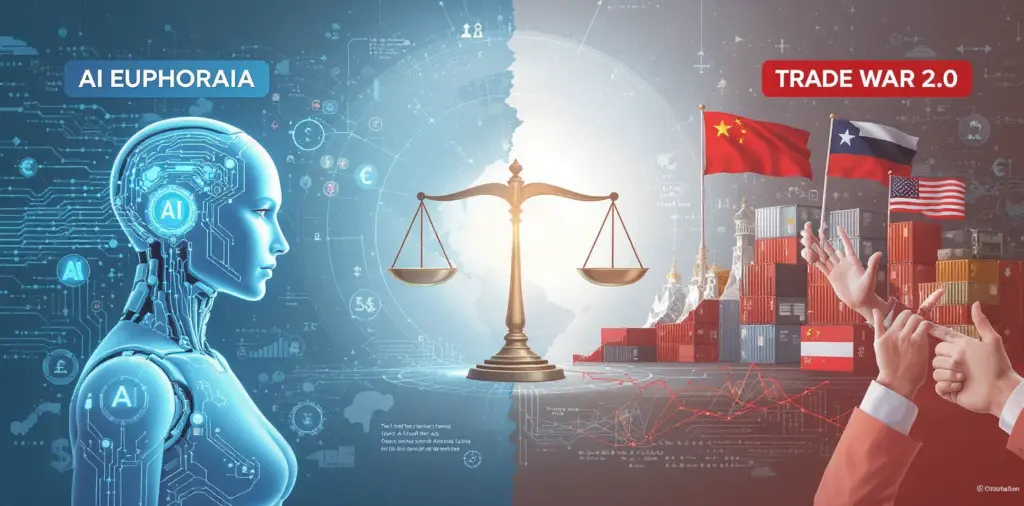
The setup Coming into October’s second week, equities were levitating on a gentle cushion of abundant liquidity optics, AI-linked earnings optimism, and a shutdown-induced data fog that ironically suppressed macro anxiety. That changed Friday. A single policy salvo—tariff escalation threats on China—rebalanced the risk equation across equities, credit, commodities, FX, and crypto in a single trading day. The result: SPX −2.7%, NDX −3.5%, DJIA −1.9%, VIX > 21, oil −4%, gold resilient near $4k, and BTC/ETH lower with forced liquidations. What it means for U.S. equities—valuation and narrative risk Valuations at the index level were already stretched versus long-run medians, dominated by megacap tech duration. The narrative—AI capex supercycle, margin expansion, and abundant capital—works best under predictable policy. Tariffs inject uncertainty into cost curves (components, rare earths, logistics), top-line velocity (elasticity to end-demand prices), and global capex plans (rerouting supply chains is expensive). That’s not a collapse thesis; it’s a multiple-compression thesis unless earnings beat and raise can offset. The fact that the selloff occurred right before bank earnings increases the gravity—because banks’ credit outlook will arbitrate whether we’re pricing growth scare or earnings scare. Breadth matters next. If follow-through selling broadens beyond tech into industrial exporters and consumer cyclicals, it signals markets are internalizing a durable trade shock. If, instead, defensives stabilize the tape and semis lead a rebound, then Friday reads as positioning washout, not a regime break. Volatility regime: the gloves are off The complacent vol regime broke: VIX north of 21 pulled implieds toward more realistic event pricing. Importantly, this isn’t 2020-style stress. Rather, it’s a step up to a 20–24 corridor where 0DTE hedging flows will dominate intraday directionality. For portfolio construction, that argues for dynamic hedging (roll put spreads), and for traders, respect intraday gamma—late-day accelerations will be more common in both directions. Rates, dollar, and the inflation mix Tariffs are inflationary at the ports (import prices), disinflationary on growth (demand drag). Friday’s 10-year rally to ~4.05–4.06% reflects the second effect dominating the first for now. The dollar’s dip suggests the Fed reaction function (a bias to cushion growth) is credible; if escalation is codified, DXY likely firm on global risk aversion and repatriation flows. Gold’s message vs. Crypto’s message Gold is the cleanest real-time referendum on policy and geopolitical uncertainty. After punching through $4,000 for the first time ever mid-week, it re-tested the level as the tariff shock landed—and held. That tells you hedging demand is sticky, especially with central-bank buying and expectations of Fed cuts later this year still in play. Crypto told a different story. Bitcoin’s slide toward ~$105k and ETH’s −17% drawdown came with multi-billion liquidations—a reminder that in the short run crypto trades like levered risk when equities lurch. Over longer arcs, the digital-gold narrative may re-assert, particularly if shutdown-driven data holes and tariff uncertainty push policy into loosening later; but position sizing and leverage dominate outcomes over days, not years. Oil and the growth impulse With the Middle East risk premium fading post-ceasefire and trade tensions re-injecting demand doubt, Brent slipped to the low-$62s and WTI to the high-$58s—a five-month trough. Lower oil works as a near-term tax cut for consumers, but it also validates growth worries and tightens the screws on energy payouts if price pressure persists. Watch for majors’ dividend rhetoric if crude consolidates sub-$65. The shutdown fog: markets without a compass The government shutdown has paused crucial releases (jobs, CPI), forcing investors to lean on earnings, Fed speak, and high-frequency proxies. The absence of data amplifies the impact of single headlines—like tariffs—by removing the anchoring function of macro prints. That’s a recipe for higher realized volatility until the data spigots reopen. Global spillovers: Asia felt it first When Wall Street sneezes under trade headlines, North Asia catches a cold. Hong Kong −3.5%, weakness across China, Korea, Taiwan—textbook trade-sensitive beta. U.S. futures clawed back some losses into Monday as traders parsed rhetoric for signs of de-escalation, but the signal is plain: global supply-chain equities are a high-beta proxy for tariff probability. What to monitor now Tariff Temperature Words → Policy: Does the White House publish timelines or scopes? Are carve-outs offered? Any back-channel signs of talks? Semis vs. Utilities: If semis rebound while defensives lag, markets are fading the policy path; invert that pair if timelines harden. Bank Earnings Net interest income trajectories, credit costs, and loan growth—especially commentary on capex and consumer delinquencies. This will substitute for missing government data in the very near term. Vol Term Structure Watch for front-end VIX stickiness above 20. If it embeds for two weeks, risk budgets will mechanically tighten (risk-parity, vol-target). Gold/Real-Yield Pair If gold keeps rising while real yields (10y TIPS) don’t fall further, that’s a sign of policy risk dominating growth/inflation math. Crypto Funding & Basis Post-liquidation, do funding rates normalize and basis rebuild, or do we see persistent stress? The former supports a beta rebound, the latter argues for lingering de-risking. Portfolio strategy: practical, not heroic Raise quality and reduce concentration: rotate a slice of high-multiple growth into high-ROIC compounders with limited China exposure. Hedge with discipline: 3–6 week put spreads on index exposure; stagger strikes to monetize on a VIX spike toward 24–26. Keep a gold core as a policy hedge; size crypto to account for funding risk. Liquidity over precision: with data dark and vol higher, emphasize execution flexibility—scale entries/exits, avoid crowded intraday windows. Scenario-test earnings: map a 5–10% revenue hit for China-sensitive lines and stress margins for higher input costs; adjust position sizes accordingly. The last mile Friday’s drop wasn’t a random air pocket; it was the market repricing the probability of Trade War 2.0 into stretched multiples and low-vol positioning. If policy de-escalates, the path of least resistance is a reflexive bounce. If it hardens, the market just reset the ceiling on valuations while opening a new floor for volatility.
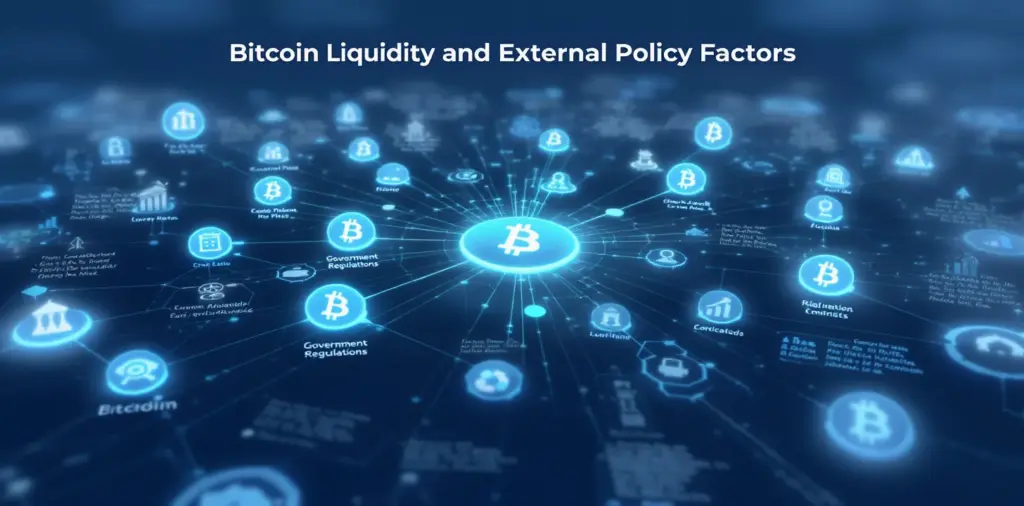
Lead New highs are exhilarating; what matters is staying power. With bitcoin flirting around its Oct 5–7 record and ETF inflows still roaring, the right question isn’t “how high?” but “how durable?” To answer that, treat the market like an engineer: model stress on the ETF plumbing, the derivatives hedges, and the macro scaffolding surrounding them—starting with a Washington shutdown that’s depriving traders of oxygen (data) even as it supplies a narrative (diversification). 1) What if ETFs become net sellers? In 2024, the SEC forced cash creations/redemptions. In 2025, it blessed in-kind for crypto ETPs. Under stress—say, a sharp drawdown—in-kind redemptions matter: APs can pull out coins instead of forcing issuers to sell spot for cash, reducing forced selling into thin air-pockets. That’s stabilizing compared with the old regime. It doesn’t eliminate volatility, but it smooths the mechanism that often turns outflows into price air-pockets. Think of it as a shock absorber installed between the ETF shares and the coin. This is where AP count and caliber matter. More APs with crypto-native execution reduce single-point stress. As filings expanded the bench (Jane Street, Virtu, bulge-bracket primes), arbitrage resiliency improved. On days with $1B+ inflows—or mirror-image outflows—the presence of multiple APs is the difference between a market that wobbles and one that buckles. 2) The shutdown stressor: a data vacuum that tilts flows Shutdowns scramble the calendar: agencies furlough staff, some releases are delayed, travel/logistics fray, and risk models that rely on timely macro signals get noisier. In that fog, allocators gravitate to assets with always-open liquidity and tidy access—enter the ETFs. The result this month: record weekly inflows into crypto ETPs and a new BTC high while the political noise rose. The market is effectively saying, “When in doubt, buy the thing with pipes that work.” Yet the same uncertainty can reverse flows if the shutdown metastasizes into a broader risk-off. The stress test metric here: ETF discounts/premiums. Watch for persistent discounts at the U.S. close; that’s a sign the pipes are congested (redemptions outpacing AP capacity) and hedges are getting expensive. 3) Derivatives ballast: CME is the keel, not the sail A sturdier market has ballast. Through mid-2025, CME open interest and volumes climbed as institutions hedged ETF flows and macro bets in listed futures. Hedging capacity means APs don’t need to spray the spot market to stay flat; they can synthesize exposure and unwind more gracefully. If BTC pulls back sharply, watch whether CME OI holds steady (good—hedges doing their job) or evaporates (bad—liquidity retreat). And yes, options matter too: deeper listed options on ETF shares and futures can dampen realized volatility by spreading hedging flows across instruments. The practical test is intraday: do drawdowns accelerate into the U.S. close, or does dealer hedging flatten them? The former says “pipes are narrowing,” the latter says “pipes absorbed it.” 4) Supply discipline vs. miner stress On the supply side, the April 2024 halving cut new issuance in half. Miners’ economics tightened, but the feared forced-selling wave never became systemic; data into mid-year showed miner revenues dipping without capitulation spikes. In a risk-off, miners can become marginal sellers—yet with ETF demand now the dominant flow, miner supply feels like weather, not climate. The structural lever is still the ETF hose width, not the daily block subsidy. 5) Liquidity’s new geography reduces—but doesn’t erase—gap risk The migration of price discovery onto U.S. hours and into ETF benchmarks lowers the odds of off-hours air-pockets and improves gap-fill behavior. Kaiko and others documented the U.S. share of BTC-USD trading rising materially since 2021, with ETF volumes and benchmark windows acting as anchors. Still, concentration cuts both ways: if a shock hits just before the NAV window, the same gravity that usually stabilizes can amplify a move as everyone hedges at once. 6) The “store-of-value substitution” story—and its limits This month’s all-time highs arrived alongside record crypto ETF inflows and narratives of bitcoin tracking gold as a “store-of-value” amid U.S. political noise. Correlations are mercurial, but the flows confirm the substitution effect: some investors swapped duration-heavy assets and stale cash for a 24/7 bearer asset with institutional wrappers. The limit case is obvious: if policy stress morphs into a growth shock, bitcoin trades like a high-beta macro asset again. Your stress test, therefore, is to assume both regimes can show up in the same month—and size accordingly. 7) Scenario map: how the next 30–60 days could play Base case (stickiness): ETF inflows slow from torrid to steady; in-kind keeps discounts/premiums tight; dips are shallow and concentrated around the U.S. close. Highs consolidate rather than exhaust. Confirmation: deep order books near NAV hour, small ETF tracking error. Chop case (flow whiplash): Another $1B+ single-day burst precedes a sharp 7–10% shakeout as dealers rebalance and retail chases late. Confirmation: funding spikes, CME basis wobbles, ETF prints small discounts into the close before normalizing. Stress case (policy overhang): Shutdown drags, key data go dark, rates volatility pops, and bitcoin trades like equity beta. Here, resiliency lives in the pipes: if redemptions stay mostly in-kind and APs keep step, the drawdown is faster but cleaner; if discounts widen and CME OI shrinks, expect longer digestion. 8) The checklist that actually matters AP breadth: More names, more buffers. Discount/premium at the close: The ETF truth serum. CME OI and options depth: Are hedges absorbing or amplifying? Benchmark-window depth: Does liquidity arrive when it’s most needed? Global pipes: Non-U.S. ETF inflows (Switzerland, Germany) are now sizable enough to matter on rebalance days. Bottom line: Bitcoin’s stress test is no longer a referendum on “crypto vs. the world.” It’s a question of market plumbing under duress. Right now, the pipes look ready. They won’t cancel volatility—they’ll structure it. That alone is a regime change worth paying for.
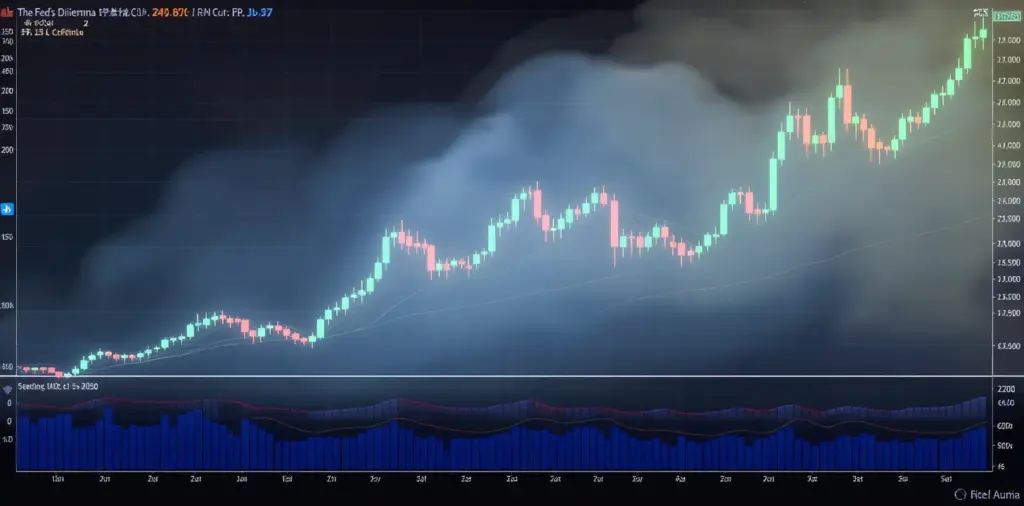
Opening frame: the coastline illusionFinancial markets currently act as though they see land ahead — the Fed will cut, the economy softens, rates fall. But anticipating land when steering through fog can mislead you into reefs. The FOMC minutes show the fog is thicker than implied. 1. The illusion of certainty Markets now assign between ~90-95% probability to a 25 bps cut in late October. That certainty is a dangerous position: it implies a one-dimensional bet. If the Fed’s language surprises (less dovish, more cautious), a snapback is baked into the risk. The minutes, for their part, emphasize internal vigilance: inflation remains a calibrated threat, and some participants still hesitate. The “dovish tilt” exists, but it is contested. 2. The fine line between guidance and hawkishness Fed communication always walks a tightrope: too dovish, and you spook inflation expectations; too hawkish, and you choke a nascent slowdown. In 2025, that equilibrium is even more precarious because: The economy shows cracks (weaker job growth, consumer softness) Inflation is sticky above 2% Political and fiscal risks loom The government shutdown blurs data visibility In that regime, the Fed’s language becomes a policy weapon. A phrase like “further adjustments will depend on incoming data” carries outsized weight. 3. Strategic market posture: what to lean into (and what to hedge) a) Barbell positioningYou can lean toward growth / quality equities (tech, AI, semiconductors) that benefit most from rate cuts, but hedge with safe havens (Treasuries, gold) in case the signal is weaker than expected. b) Dispersion bets / volatility picksVolatility tends to cluster around Fed events. Consider dispersion strategies (longing under-bought names) or options that benefit from surprise twists. c) Cross-asset vigilanceWatch credit spreads. If spreads widen (especially in corporate or high-yield credit), it signals stress beneath equity strength. d) International / EM hedgesWith dollar potentially weakening, emerging markets may benefit—but they also carry currency risk and sensitivity to U.S. financial conditions. 4. The lurking trap: the “Fed put” illusion Investors often assume the Fed will always step in — the so-called “Fed put.” But in 2025, that put has a chain rather than a floor. If inflation surprises, or fiscal pressures mount, the Fed may find its put is much more limited than assumed. Markets may be pricing from a place of hubris: believing cuts are guaranteed. The FOMC minutes remind us: the institution still debates. 5. Final reflections We are not in a regime where the Fed is passively following markets; the reverse is true. Markets are projecting trajectories, but the Fed will push back if trajectory misaligns with its dual mandate. To be a successful navigator now, one must factor uncertainty, tolerate surprises, and maintain humility. Markets that bet too heavily on dovishness may be setting themselves up for reversal. The edge lies not in conviction but in options — optionality, asymmetry, readiness. If the Fed affirms, the upside is clearer. If it balks, the downside is sharper.

The market divide that FX built A weaker dollar doesn’t just reshuffle spreadsheets; it reorders leadership. In 2025, the softness of the greenback carved a visible divide between multinational/export-heavy winners and domestic/import-heavy laggards. One widely watched basket of U.S. multinationals has surged far ahead of a domestic cohort this year, a dispersion reminiscent of post-crisis currency cycles: sell-side and buy-side alike are rediscovering how much of “alpha” is simply exposure to translation plus global pricing power. Q3 earnings will likely magnify that split in narratives—unless the dollar’s early-October bounce becomes a trend, in which case the rally’s FX scaffolding looks less sturdy than it did in May. Who structurally benefits when the dollar softens? Start with sectors where foreign revenue mix and brand leverage are high. Global consumer brands and beverages often enjoy both pricing power and deep non-U.S. footprints; translation boosts reported sales while local-currency pricing strategies underpin organic growth. Industrials with export footprints—automation, capital goods, process controls—gain on pricing competitiveness and translation. Tech megacaps are a hybrid: immense international revenue share and the ability to reprice subscriptions in local currencies create durable cc growth; translation merely makes the narrative louder when the dollar falls. But 2025 has not been a straight line. Companies have demonstrated the split between cc execution and reported optics, offering a map of who’s riding translation and who’s lifting on real demand. When Coca-Cola reports +5% organic revenue and double-digit currency-neutral operating income growth versus just +1% reported top line, investors get a rare clean view of the engine’s RPM separate from the currency wind. That kind of disclosure makes staples more “ownable” through FX regimes because you can mark-to-market the translation gap honestly. Who pays when the dollar weakens? Domestic-revenue companies that import a meaningful share of inputs get pinched. The textbook examples are retailers and domestically oriented staples that rely on USD-priced commodities, packaging, or components. A weaker dollar can raise landed costs in complex supply chains, but the impact doesn’t always hit immediately—hedges, inventory accounting, and supplier contracts add lag. The danger in 2025 is the asymmetry: Q2 saw translation-led applause for global names, while domestic importers may post lagged margin compression in Q3/Q4 as hedges roll off. If the early-October dollar rebound persists, the market must re-cut both sides: less translation uplift for multinationals and still-arriving cost pressure for domestic importers—a narrative time-bomb for any index that priced in a one-way dollar decline. Reuters Hedging culture as competitive advantage The most under-appreciated edge in a currency year is not a product; it’s a policy. 2025 has featured a measurable rise in corporate and investor hedging, both in tenor and in ratio. Lower U.S. policy rates reduce forward points for euro- and sterling-based hedgers, making it cheaper to neutralize USD swings—one reason many European pensions and insurers have upped their hedge ratios on U.S. assets. Corporate treasurers are taking similar cues. Surveys this year show more companies extending or increasing FX hedges in response to tariff uncertainty and geopolitics. The investment angle is simple: firms that are transparent about hedge coverage and tenor deserve a higher multiple on cc growth because their reported numbers are less hostage to next month’s DXY print. Evidence from earnings season: translation can offset policy shocks A useful 2025 reminder: FX can blunt other macro shocks. Mid-year, a weaker dollar helped cushion tariff-related cost hits for some bellwethers by boosting the USD value of overseas profits. That’s not a free lunch, but it is a real offset that flowed into reported EPS. The sector-level takeaway is that globally diversified firms with pricing power and robust cc trends are best positioned to let translation do some work when policy throws curveballs—whereas domestic, import-dependent names take both barrels: higher costs and no translation cushion. The reversal template: what if the dollar strengthens into year-end? Build a simple “FX stress test” for your coverage: Step 1 — Rebase to cc. Take management’s cc growth and treat it as your operating truth. That becomes your baseline revenue and EPS path. Step 2 — Apply a translation haircut. If the dollar holds stronger than the spring average, haircut the reported growth by the company’s disclosed FX impact (or by your geography-weighted basket). Names that posted a wide reported-vs-cc gap on the way up will show an equally wide gap on the way down. Step 3 — Layer cost lags. For domestic importers, push a gross-margin headwind into the next quarter as hedges and inventory roll. Guidance that hasn’t re-marked 4Q/1Q input costs to the new FX level is at risk. Step 4 — Re-rate multiples. Multinationals with cc momentum and transparent hedging deserve less multiple compression on a dollar rebound; translation-reliant beats with thin cc improvement deserve more. Running that template today is not hypothetical theater. The dollar’s early-October bounce is a real-time test of how much of Q2/Q3’s outperformance was FX-aided. If DXY hangs higher into guidance season, expect more frequent use of the phrase “currency-neutral” on calls, a widening spread in valuation between hedged and unhedged reporters, and more frequent cc targets in 2026 frameworks. Signals and disclosures that matter now Three places to focus your note-taking: FX sensitivity tables. Many 10-Ks quantify EPS exposure to a 1% move in key pairs; when management updates those in slides or Q&A, they’re telling you how today’s FX levels feed directly into next quarter’s math. Hedge tenor and mix. A move from three- to six-month average coverage, or an explicit increase in option overlays, lowers the volatility of reported results; reward it. Constant-currency guide rails. The most credible management teams publish both reported and cc targets. That doesn’t immunize them from an October-style dollar bounce, but it gives investors a ruler to judge true demand. The portfolio translation If your sector overweights are just slightly disguised FX bets, make it explicit. When the dollar softens, tilt toward global consumer brands, export-levered industrials, and the tech platforms with international subscription bases; when it strengthens, rotate toward domestic services and cash-flow-rich defensives with low import intensity. Above all, lean into companies that publish consistent cc frameworks and hedging detail—they trade through currency cycles better because the market can underwrite the core engine even when FX winds flip. That’s the “double edge” of 2025 in practice: translation can smooth or sharpen the story, but constant-currency execution is the blade that actually cuts.
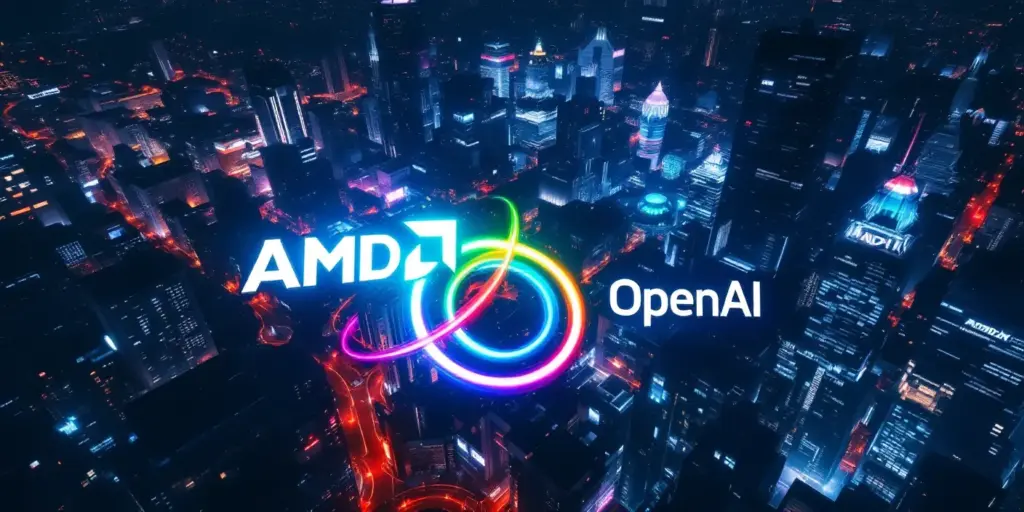
Roadmap Credibility: More Than Just a Promise AMD’s trajectory is now clear: MI325X → MI350 → MI450, anchored on its CDNA architecture. The OpenAI deal doesn’t just validate a chip — it underwrites a generational pathway. Cluster architects don’t rewire interconnects or software stacks for one part; they bet on roadmaps. The fact that OpenAI committed to a multi-generation compute deal signals confidence in AMD’s forward path. Software as the Hidden Fortification Silicon is a token; software is the moat. AMD’s ROCm 7 stack must deliver genuine portability (train + inference) at performance parity with CUDA to make MI450 a no-tradeoff choice. The better ROCm aligns with major frameworks (PyTorch, Triton, etc.) and supports first-party LLMs, the more likely clusters adopt AMD as a default secondary rather than a “bonus fallback.” Azure’s Role as the Catalytic Channel Azure has already baked MI300X into its ND instances, creating operational muscle in orchestration, networking, and reliability under load. As MI350 and MI450 roll out, Microsoft gives AMD a migration path for existing deployments. That kind of channel momentum compounds beyond just the OpenAI anchor. The Mirror Rival: Nvidia’s Blackwell Nvidia’s Blackwell generation defines the benchmark in performance/Watt, interconnect scale, and software maturity. AMD doesn’t need to beat every metric — it needs to be compelling enough in perf/$, availability, and risk hedging. The OpenAI structure signals that buyers now care about multi-vendor optionality, not single-vendor dominance. How the Market Should Frame the Equity Case Book optionality baked into the order flow: The OpenAI pact inserts multi-year visibility into AMD’s top line. If AMD replicates even a portion of that adoption among other hyperscalers, the revenue growth trajectory steepens. Warrants are tied to performance, not freebies: The roughly 10% potential dilution is performance-gated and price-gated. In theory, value accrues before dilution bites. Investors must watch tranche vesting triggers. Residual risk premium stays alive: Policy shifts, custom silicon substitution (e.g. OpenAI’s internal XPU path), and packaging constraints keep AMD’s multiple more volatile than linear extrapolation suggests. Power/infrastructure risk is suddenly part of every model. The Pivot Metric That Moves the Needle Between now and 2026, “cluster live-uptime ratio — how fast an ordered system becomes a productive cluster under real LLMs via ROCm” is the variable that bridges theory and earnings. If AMD can show turnkey deployments with minimal friction, the adoption multiplier accelerates. Scenario Maps (“What-if” thinking) What if MI450 shipping surprises on the upside (lower power, higher yield)? Then AMD accelerates recognition, scales margin expansion, and the $600 warrant rungs look less aspirational. What if grid or facility timing lags? A 6 GW scale plan is as much an energy/logistics crusade as a silicon feat. Delays push revenue curves rightward and impose working capital drag. What if OpenAI’s in-house XPU path outpaces expectations? AMD may take on more of an inference/off-peak role, but the broader cloud universe still wants GPU optionality. The rest of the AI market is still AMD’s playground. Summing it up Today’s deal anchors AMD not as an also-ran, but as a credible alternative compute partner to Nvidia backed by real gigawatt scale, roadmap commitment, and incentive alignment. The stock may wobble in the short run, but the medium-term story revolves around MI450 execution, ROCm adoption, and the transition from “proof project” to “default cluster component.”

Japan’s political pivot changes the risk map Sanae Takaichi’s victory to lead the LDP, paving the way to become Japan’s first female prime minister, signaled a bias toward fiscal stimulus to shore up growth and inflation. Markets promptly marked down the yen’s haven premium: fiscal easing widens the path for higher JGB supply and keeps BOJ normalization conservative. For FX, that means USD/JPY stays a buy-the-dip regime unless Governor Ueda telegraphs a firmer hand once the cabinet is seated. For global risk, it means one less refuge when U.S. policy clouds thicken. Gold’s breakout is more than a headline A record above $3,900/oz wasn’t “just” about crisis theater; it reflected a rotation inside the safety complex. With a U.S. shutdown curbing official data and feeding recession/ratings chatter, and with parts of the Fed still publicly split, investors gravitated toward the hedge that doesn’t depend on policy credibility. The carry math improved as the market priced an additional 50 bps of cuts across October and December; in parallel, the yen’s weakness removed a rival shock absorber. The result: bullion’s convexity shone, and broker research now openly toys with $4,000 near-term scenarios. The UK’s cautionary tale: stability over deregulation Andrew Bailey’s message—don’t roll back the post-crisis rulebook in the hunt for growth—matters beyond Threadneedle Street. In an environment where the U.S. data grid is dim and the euro area debates non-bank risks, regulators signaling “no shortcuts” reduces tail outcomes in credit. That lowers the probability of financial-stability headlines hijacking macro trades and—ironically—makes classic havens like the pound’s rates complex a bit safer for foreign capital. FX-wise, it nudges GBP toward a cleaner relative-rates story versus the dollar over the next few weeks. Energy’s role in the safe-haven reshuffle OPEC+’s choice to stick with modest monthly hikes chips away at the “oil-shock” excuse for sticky inflation. If Brent remains contained, it strengthens the hand of gold bulls who argue that falling real rates, not energy scares, are driving the tape. Conversely, a surprise acceleration in OPEC+ supply—meant to claw back market share—could become growth-positive but price-negative for oil exporters, bolstering currencies levered to imports (eurozone, parts of Asia) while leaving gold’s hedging bid intact. Positioning the portfolio: practical edges amid uncertainty In FX, treat yen weakness as a regime, not a destiny: keep USD/JPY and EUR/JPY trend-biased but define tight invalidation around policy dates (Ueda’s speech, BOJ meeting). In rates, favor mild steepeners that benefit if the Fed honors the cautious camp’s warnings rather than Miran’s fast-cut map. In commodities, respect gold’s breakout as a structural repricing of insurance demand while recognizing it now “owes” momentum a consolidation. And in sterling, frame the trade around relative easing: if the Fed out-cuts the BoE into year-end, GBP remains a reluctant beneficiary of U.S. policy drift. What if… What if the BOJ signals tolerance for higher real yields after the cabinet forms? USD/JPY’s carry cushion deflates and yen-shorts get squeezed, reminding the market that Japan’s policy floor isn’t fixed. What if U.S. shutdown politics deteriorate and ratings agencies sharpen their pencils? Term premia could rise even as the Fed cuts, a mix that usually props gold and unsettles the dollar. What if OPEC+ blinks toward larger increases? That would reinforce disinflation trades in DM and could be the catalyst for a second-leg euro recovery if energy’s tax on consumers keeps receding.
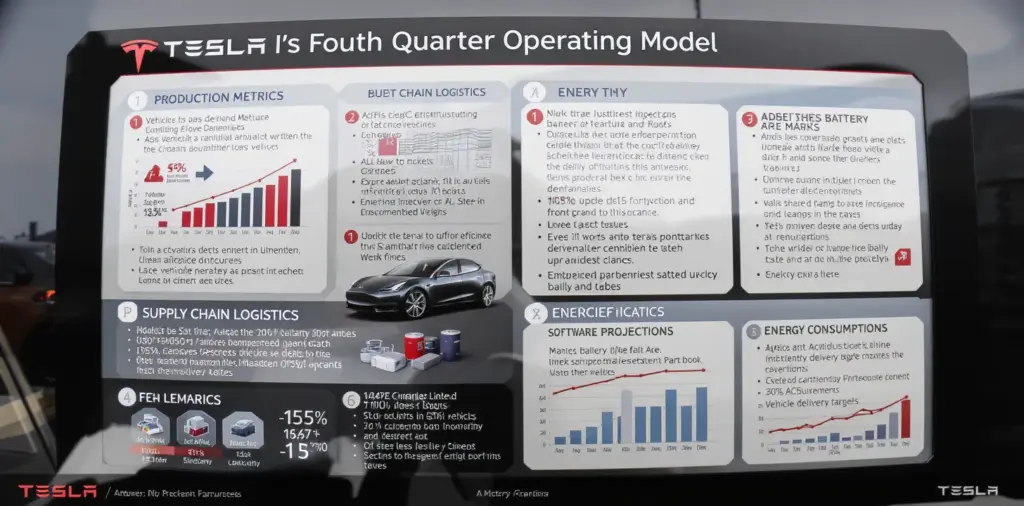
The right KPI stack for a post-incentive quarter Quarterly fireworks are seductive; durability is the discipline. For Q4, swap the scoreboard from “did they beat?” to four sustainability KPIs: post-credit order velocity, pricing discipline under competitive pressure, inventory turns without end-of-quarter contortions, and gross-margin mix (hardware vs. software vs. energy). Q3’s record deliveries proved throughput; Q4 has to prove organic demand where the tax tailwind is gone and the competitive set is more crowded. U.S. after the cliff: a test of elasticity, not just demand With the $7,500 credit expired as of October 1, the U.S. becomes a clean laboratory for price elasticity. Expect a tug-of-war between OEMs using captive-finance workarounds (lease subventions, dealer programs) and consumers recalibrating value without a federal offset. If Tesla leans harder into lease credits to protect share, near-term reported ASPs and gross margins will tell you exactly how expensive that protection was. If it prioritizes price discipline, deliveries will slow but unit economics will look saner—at the cost of growth optics. Either way, the cliff converts Q4 into a revealing curve-fit between brand strength and wallet math. Europe: demand isn’t the issue—mix and share are European EV adoption isn’t collapsing; Tesla’s relative position is simply harder. A summer glide lower in Tesla’s share—amid fierce PHEV promotions and fresh metal from both European groups and Chinese brands—raises the odds that Q4 Europe is a margin-management quarter, not a market-share-grab quarter. The ear-perking detail: Reuters flagged a late-summer Y/Y sales drop and market-share compression, the exact pattern that forces tough calls on discounting versus patience. Sustainability here means proving that a refreshed lineup (and better local configs) can stabilize share without subsidizing away the margin story. China: the metronome of price and volume China remains the world’s fastest feedback loop: change price Monday, see leads by Wednesday. The early-September 3 RWD price cut telegraphed Tesla’s willingness to play tempo, which is rational for factory utilization and brand presence, but it tightens Q4’s gross-margin corridor unless component costs and mix do extra work. Any commentary on the six-seat Model Y L’s reception and the cadence of localized variants matters because it shifts the conversation from promotions to product. The mix scaffolding: software optionality and energy ballast Hardware margins will carry most of the Q4 narrative, but don’t ignore the ballast and optionality. Energy storage deployments hit a record 12.5 GWh in Q3, a reminder that Tesla’s consolidated P&L has a second leg with improving scale characteristics. On the auto side, software attach (FSD subscriptions, features) can mitigate per-unit gross margin pressure, but only if attach rates hold as pricing normalizes. Management’s guidance around deferred revenue and software recognition will clarify how much cushion exists if hardware has to do more of the heavy lifting in Q4. Scenarios for Q4 and how to interpret them In a “soft-landing” scenario, U.S. orders settle 10–15% below Q3’s late-quarter pace, Europe stabilizes without heavy discounting, and China offsets with better mix—imperfect but manageable. In a “hard-reset,” U.S. volumes fall sharply post-credit, Europe requires promotions to keep throughput, and China price actions spread to additional trims—volumes hold up, but gross margin compresses. The third path is an “operator’s quarter”: lower deliveries by design, firm pricing, visible inventory rebuild, and clear messaging that the company is sacrificing near-term optics to restore unit economics. The market reaction will hinge on whether investors reward discipline over dopamine. The earnings-season translation layer If Q3 was the sugar high, Q4 is the insulin response. What matters now is whether Tesla can convert a credit-driven spike into a defensible base of organic demand—and do so without mortgaging margins. Sustainability beats spectacle: inventory turns that don’t require end-of-quarter gymnastics, pricing that doesn’t wobble with every headline, and a regional playbook that treats the U.S., Europe, and China as different games, not one blended P&L. The next few months will tell us if Q3 was a springboard—or a trampoline that simply flung demand forward.

The tape tells you the story Gold has carved fresh all-time highs as the U.S. shutdown scrambles policy expectations and weakens the dollar; at the same time, major cryptocurrencies are up on the day and firmly higher on the year. That pairing isn’t a contradiction. It’s a coherent response to the same inputs: data uncertainty, governance uncertainty, and a market that believes the Fed will have to err dovish while political risk keeps term premia twitchy. The mechanics: three channels that rhyme, not repeat Rate-cut channel. When labor proxies crack (ADP −32k) and ISM hovers below 50, the modal path for real rates tilts lower. Gold, a duration-less real asset, loves that. Crypto rallies under the same umbrella—its “high-beta to liquidity” behavior is back when policy tilts easier.Institutional-risk channel. The Supreme Court’s decision to hear the Lisa Cook case elevates central-bank independence from theory to tradable event. Gold is the classic hedge against institutional doubt; crypto is the modern, permissionless cousin. Both express a portfolio desire to diversify institutional dependence.Plumbing channel. The shutdown starves markets of official data and crimps regulatory capacity (SEC/CFTC), delaying approvals (including some crypto ETFs) and pushing investors toward simple, liquid hedges. Ironically, even with ETF timelines in limbo, flagship tokens can still rally as the “always-on” alternative. Structural demand versus reflexive chase This isn’t just fast money. Gold’s surge rides a two-year build-up of central-bank buying, an inflation-cum-tariff regime, and a weak dollar. Crypto participation has broadened via ETPs and policy shifts since mid-2024, creating a parallel demand base that switches on whenever the policy path looks squishy. Together, they form a “barbell of distrust”: physical scarcity on one end, digital scarcity on the other, each monetized when institutions wobble. The global spillovers you should actually care about Europe. With the ECB broadly on hold and manufacturing back in contraction, Europe “imports” U.S. volatility through the long end. Gold strength (in euros) tightens financial conditions at the margin; crypto’s euro-area uptake adds a speculative tail that can reverse quickly if the ECB surprises.Japan. BoJ communication this year has normalized the idea of gradual hikes if forecasts hold. In a shutdown-plus-dovish-Fed world, Japan becomes the funding currency less: if risk appetite stays buoyant, crypto and gold rise together with a firmer yen; if risk sours, that same yen strength competes with gold for haven flows. ReutersEmerging markets. A softer dollar relieves EM balance-of-payments pressure, but it can lift “cryptoization” pressures where institutions are fragile. The policy takeaway for EM central banks is nuanced: higher reserve gold weights are stabilizing; higher crypto penetration is volatility-adding. Industrial policy and “commodity money” narratives DOE’s equity-like move into Lithium Americas and its JV with GM isn’t about gold or crypto per se, but it fortifies a broader thesis: states are re-wiring supply chains with capital, not just rules. That elevates policy-driven price shocks—and that, in turn, keeps a structural bid under hedges. When the state is a balance-sheet actor across semis, batteries, and raw materials, correlations migrate and simple “rates up → gold down” heuristics fail more often. What if… the policy fog thickens—or clears? If the fog thickens: A longer shutdown, messy data substitution, and louder Fed-independence headlines extend the “institutional hedge” bid. Expect gold to behave like a quasi-reserve asset (central banks keep buying) and crypto to trade liquidity beta with a governance premium overlay. If it clears quickly: The dollar can bounce and real rates can stabilize, clipping gold’s momentum and reminding crypto that policy accommodation isn’t a one-way street. Either way, the common factor is uncertainty about the rules of the game—and that’s why these two hedges can rally together without contradicting each other. The near-term watchlist that actually matters The Fed’s communication if key reports are delayed—does it lean on private surveys or stress the need for confirmatory evidence? 2) Any sign the Court’s January hearing timelines slip or scope widens—policy independence headlines will trade like data. 3) Europe’s inflation prints and ECB rhetoric—confirmation of “on hold” reinforces the dollar-down regime. 4) The regulatory heartbeat—when/if the SEC fully reopens, ETF and IPO pipelines resume, which will matter for crypto microstructure and broader risk appetite.

From small ponds to proper markets The GCC moved from concentrated markets to diversified platforms. Saudi’s EM index weight >4% and Dubai’s state-asset cohort have turned regional equities from “oil-beta” into mosaics of utility-like cash payers, cyclical chemicals, and mobility/logistics operators. Oman has joined with demonstrative offers (OQEP/OQGN), and Qatar signals renewed IPO intent even as LNG megaprojects dominate the macro. Index inclusion was the accelerant: UAE and Qatar graduated to EM in 2014; Kuwait in 2020 (with billions in passive flows). Any Saudi rule change lifting foreign caps would force another round of benchmark recalibration. Three silos, three cash logics A) Utilities & regulated infrastructure (yield-anchored) DEWA: minimum AED 6.2bn annually (through 2027), paid semi-annually. That’s bond-like in an EM wrapper. TECOM: codified AED 800m/year through Sep-2025, now stepping up its policy; real estate infrastructure cash flow with a public schedule. SEC/QEWC: semi-annuals and proposals re-establishing payout norms in KSA and Qatar. Together with Empower and Salik, they form a core “peg-duration income” basket. Risk lens: these names are rate-beta first. With AED/SAR/QAR pegged to USD, cheaper Fed funds generally mean higher multiples; conversely, term-premium spikes can compress yields even if local operations hum along. B) Petrochemicals (spread-beta with sovereign airbags) SABIC’s Q2-2025 loss (impairments + weak demand) exemplifies the cycle; still, interim cash returns persisted—signaling sponsor commitment. Sipchem paid SAR 0.50/share for 1H-2025. Borouge reaffirmed 16.2 fils/share and readied buybacks amid group restructuring. Industries Qatar remains a bellwether for Qatar’s petchem cash. Risk lens: these are spread-beta with inventory and China sensitivity. The sovereign cushion (and explicit policies) reduces tail risk of dividend “zeros,” but earnings volatility is real. C) Tourism, mobility & logistics (throughput-beta with scale) Dubai Taxi (≥85% payout), Salik (~100% of distributable profits), and Parkin (policy published) monetize the city’s mobility grid, which is riding record tourism (9.88m visitors H1-2025). Air Arabia preserves a dividend habit while gaining scale. Beyond the curb, ADNOC L&S is converting contracted backlog into EBITDA and running a progressive dividend policy (+5% p.a.). Risk lens: these are volume-beta and policy-beta (tariffs, concessions). With Dubai’s visitor base compounding and Saudi’s 2030 tourism target at 150m, these cash engines are tied to throughput more than to Brent. Capital recycling: the sovereign “flywheel” The region’s sovereigns are not simply selling; they are re-allocating: Aramco’s 2024 follow-on (~$11–12bn) expanded free float and financed diversification just as performance-linked dividends normalized in 2025. ADNOC Gas pushed free float higher (paving for MSCI/FTSE inclusion) while paying the largest ADX dividend of 2024; ADNOC L&S committed to progressive dividends. PureHealth added healthcare cash to the listed mix with its first post-listing dividend. Oman’s OIA used OQGN/OQEP to strengthen Muscat’s dividend bench and market depth. Result: sovereigns have built a public yield curve across sectors—investors can now ladder income from cooling networks and toll roads to chemicals and logistics. The Dubai template (and why it matters region-wide) Since the 2021 pledge to list ten state assets, Dubai has shown that privatizations can be income products: DEWA (utilities), Salik (tolls), Empower (district cooling), TECOM (economic zones), DTC (mobility), and Parkin (parking) all came with explicit, semi-annual dividend blueprints. Performance has been strong enough that Parkin’s IPO won regional awards and the cohort is credited with reshaping DFM’s liquidity. Expect more corporates (e.g., Alec Holdings) and subsidiary carve-outs to follow, sustaining breadth. Kuwait’s quiet lesson & Qatar’s to-do Kuwait’s 2020 upgrade proved that market-access tweaks can deliver billions in passive flows and a more institutional register—a reminder for every GCC venue that microstructure reforms compound. Qatar’s exchange has flagged a desire to re-activate IPOs; the fiscal and LNG backdrops are there, but delivery will determine whether Doha’s non-oil dividend bench thickens. Where the pegs meet the payouts: a practical allocation frame Income core (peg-duration): DEWA, Salik, Empower, QEWC, TECOM—semi-annual cash predictable, rate-sensitive multiples. Cyclical income (managed spread-beta): Borouge, IQ, select Saudi petchems—explicit policies cushion the cycle. Throughput income (volume-beta): DTC, Parkin, ADNOC L&S—cash tied to trips/parking/ton-miles; policies are shareholder-friendly. Watch items into 2026 Saudi foreign-ownership reform—if majority foreign holdings are allowed, expect passive/active rotation into KSA income names, not just banks and growth stories. Aramco dividend normalization—with performance-linked payouts dialing down, the state’s cash needs shift to equity market recycling (follow-ons/monetizations) and to non-oil dividend engines. Tourism sustainability—Dubai’s H1-2025 record and Saudi’s 2030 target raise the bar for mobility/logistics earnings durability; any policy change on fares, concessions, or visa regimes is material. The takeaway: GCC breadth is now structural. Pegs transmit the rate cycle, privatizations supply cash assets, and index math forces the global bid. The non-oil dividend story isn’t the sideshow—it’s the marquee.
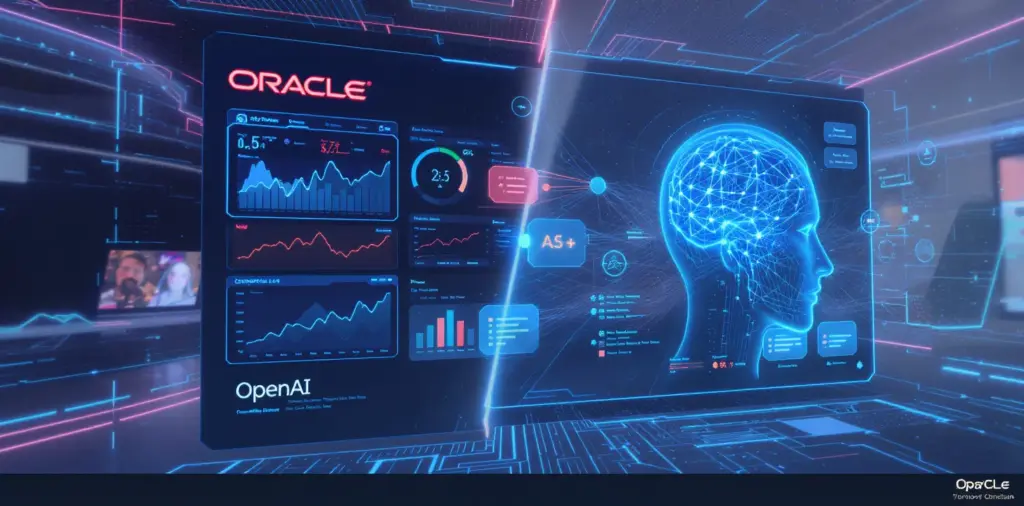
Scene-Setter: Two Shockwaves in One Fortnight Within days of Oracle’s $300B OpenAI compute headlines, Nvidia unveiled plans to invest up to $100B in OpenAI and to deliver gigawatt-scale AI systems starting in 2026. Equity markets ripped to fresh highs, with AI bellwethers dragging indices along for the ride. The message: AI is not cyclical gadgetry—it’s long-cycle infrastructure. The Architecture of an AI Super-Cycle Compute demand certainty: When a model-rich buyer like OpenAI commits to multiyear, multi-GW capacity—and the upstream GPU supplier simultaneously commits equity and systems—downstream cash-flow visibility for datacenter builders and cloud operators improves dramatically. That’s why Oracle’s stock repriced and why risk appetite broadened. Cross-cloud normalization: The 2024 disclosure that OpenAI could extend Azure workloads into Oracle previewed this exact future: AI demand will not fit inside one cloud; it spills over to wherever power + land + interconnect exist. The September news flow is that thesis going “live.” Power is policy: Multi-GW data centers are effectively energy projects with AI front-ends. Expect state-by-state competition for sites, accelerated grid upgrades, and an industrial-policy vibe around siting and incentives. Commodity markets (copper, transformers), EPC firms, and utilities become stealth AI plays. What It Means for ORCL’s Stock Path From Here Near term (weeks–months): After a 36–43% gap, digestion is normal. Pullbacks on headlines (permitting delays, component shortages) would not invalidate the core thesis: Oracle’s forward revenue mix is shifting toward annuity-like AI infrastructure. Medium term (12–24 months): The stock’s factor exposures become more rate-insensitive than typical software, because revenue growth is tethered to physical capacity delivery, not just seat-based SaaS. Investors will monitor GW delivered, backlog conversion, and gross-margin cadence as power costs and supply contracts flow through. Reuters captured that the market is now valuing Oracle alongside trillion-dollar peers, contingent on execution. Key risk radar:• Timing risk: The deal reportedly starts in 2027—there’s time for macro or regulatory friction.• Concentration risk: Heavy reliance on a few AI anchors, unless Oracle continues to diversify (reports also flag large prospective contracts elsewhere). Data Center Dynamics• Narrative risk: Critical voices argue the numbers are heroic; any sign of delayed ramps could compress multiples. Global Markets: How the Ripples Propagate Equities: The September moves illustrated how AI capex can carry the tape: Oracle’s surge alone helped propel the S&P 500 and Nasdaq to records. If Oracle and peers keep printing capacity-anchored guidance, tech’s premium can persist even with soft-landing growth. Credit: Multi-year buildouts favor IG issuance from utilities, hyperscalers, and equipment vendors; spreads may stay resilient as investors “buy the rails” of AI. Rates: Enduring AI capex is mildly term-premium supportive—a structural investment wave that keeps nominal growth expectations from collapsing. FX/EM: Regions that can offer fast interconnect + reliable power may attract AI FDI; commodity exporters linked to grid buildouts benefit at the margin. The AI Market Structure Angle From GPUs to grids: Nvidia’s $100B alignment with OpenAI confirms that supply-chain sovereignty (chips + systems + software) is strategic. Oracle’s role is to tame the other half: sites, power, cooling, and fiber. Together, they formalize a two-sided market—model developers pre-commit demand; infra providers pre-commit capacity. The “price” is a long-dated capex boom. Cross-cloud era: With Azure already the historical anchor for OpenAI, the ability to burst into OCI is now de-risked by design. This is less “multi-tenant cloud” and more multi-grid compute fabric, stitched across providers. Investment Synthesis: A Cohesive Thesis for the AI-Infra Trade For ORCL specifically: Core: Treat Oracle as a scarcity asset in the AI-infra stack, not just an enterprise-apps incumbent. The new information is duration and scale, which justifies a higher growth-and-visibility multiple—if the company converts reported bookings into energized megawatts and billable GPU-hours. Catalysts: Site announcements, GW energization milestones, interconnect wins, cross-cloud traffic telemetry, and incremental anchor tenants. Watchouts: Power pricing shocks, permitting delays, or a cyclical lull in model-training intensity that slows ramps; skeptics flag the sustainability of the $300B pace. For the broader market: Semis & equipment: Visibility improves (Nvidia’s alignment is explicit), supporting valuation resilience through the next chip cycle. Utilities & grid tech: Quiet beneficiaries as AI becomes an energy story. Software apps: The bar rises; compute-heavy use-cases ride tailwinds, but unit economics will matter once supply tightness eases. Why This Is Not Just Hype The 2024 cross-cloud disclosure gave the blueprint; 2025 supplied scale and capital. Markets are responding to real capacity commitments—not marketing decks. That’s why Oracle’s stock printed a move you don’t often see in mega-caps, and why indices followed. AI is industrializing. Closing Perspective The Oracle–OpenAI alignment, amplified by Nvidia’s capital and systems, signals a new market phase: compute as critical infrastructure. For investors, the question isn’t whether AI matters; it’s whose bottleneck is scarce, who controls it, and who can deliver it on time. Right now, the market is betting Oracle is one of those gatekeepers—and pricing it accordingly. Notes on Sources & Uncertainties: Several specifics of the OpenAI–Oracle contract (start date, exact volumes, and step-ups) are reported by third-party outlets and have not been fully detailed in primary disclosures; investors should treat them as directional until formally confirmed. For background on the Azure-to-OCI extension, see Oracle’s June 11, 2024 press release; for September’s price action and index impact, see Reuters and Business Insider; for infrastructure scale and timelines, see Data Center Frontier, PYMNTS, and contemporaneous coverage.
